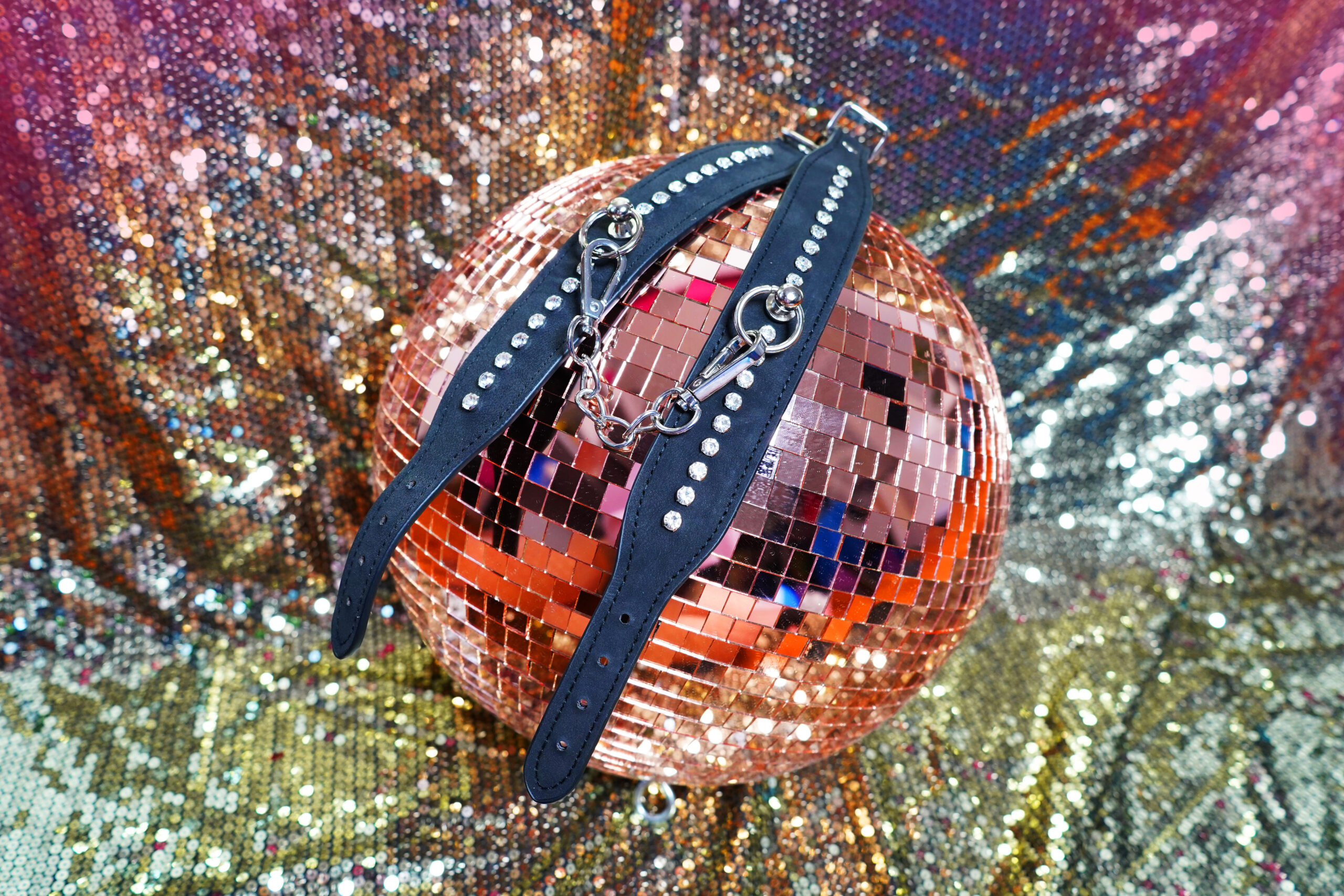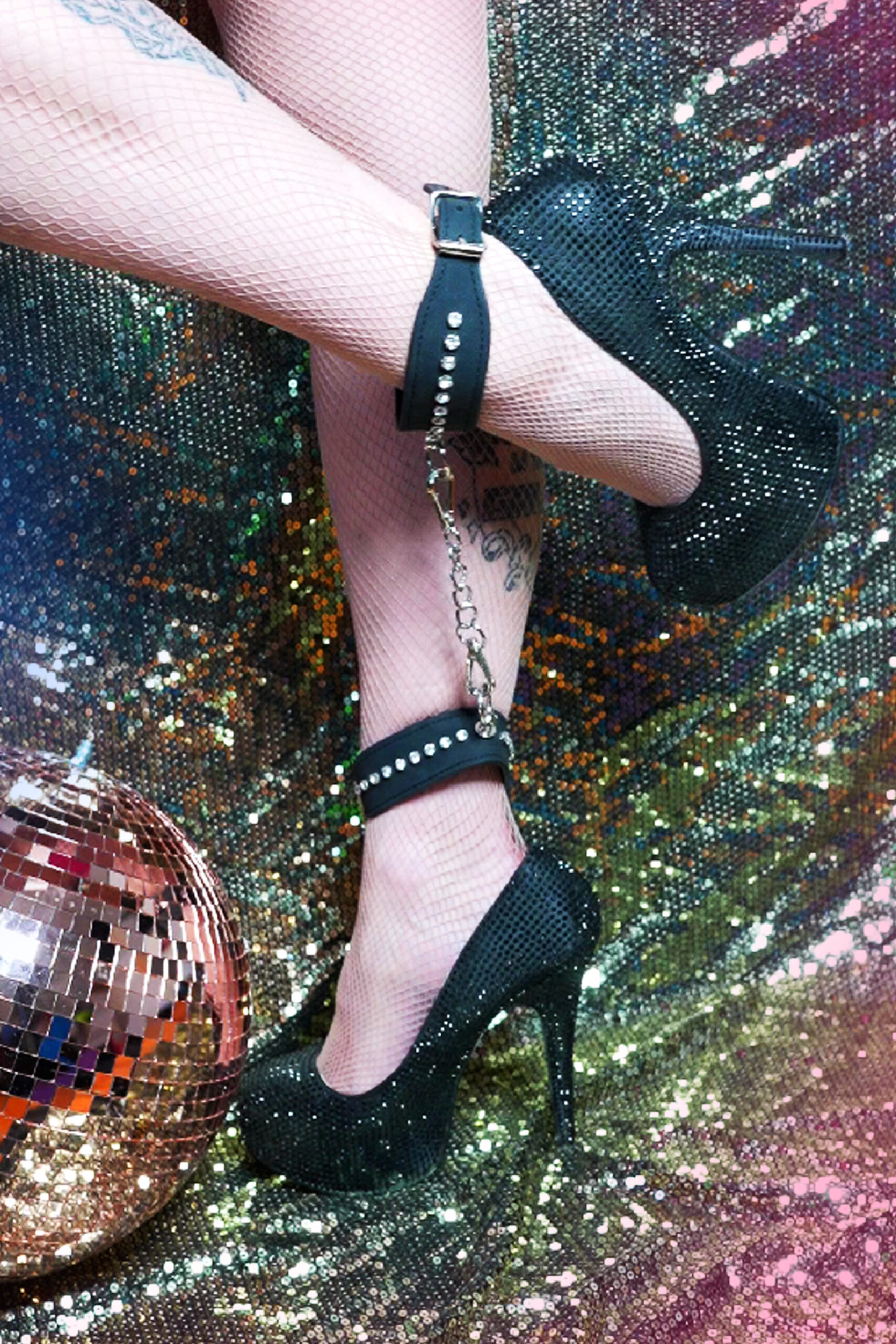Phallophilia Fetish: The Admiration Of Phallic Symbolism
Etiology and Definition
Etiology and definition are fundamental concepts in understanding the complexities of human behavior, particularly when it comes to fetishes like phallophilia. Phallophilia, often referred to as a fetish or a paraphilic disorder, is characterized by an intense fascination with phallic symbolism, which can manifest in various ways such as an attraction to penis-shaped objects, a strong interest in male genitalia, or even a desire to engage in activities that evoke a sense of power and dominance associated with the male organ.
Etymological Origins
The term “Phallophilia” refers to a type of fetishistic obsession or fascination with phallic symbolism, which can take many forms in various cultures and contexts.
Etiologically, the concept of Phallophilia is often linked to ancient mythological and symbolic representations of masculinity, power, and fertility. In some cultures, phallic symbols are revered as sacred objects that embody these qualities, while in others, they may be viewed as taboo or even repellent.
From an etymological standpoint, the term “Phallophilia” itself is derived from the Greek words “phallos,” meaning penis, and “philia,” meaning love or affection. This etymology reflects the complex interplay between cultural attitudes towards male genitalia and the symbolic significance they hold in various societies.
Phallophilia can manifest in different ways, ranging from romantic and erotic relationships to artistic expressions and cultural practices. In some cases, individuals may develop a fixation on phallic objects or images, while others may find meaning and comfort in phallic symbolism within spiritual or philosophical contexts.
Despite its varying manifestations, Phallophilia is often viewed as a controversial topic due to the potential for misunderstandings about male genitalia and the associated power dynamics. As with any form of fetishism, it’s essential to approach Phallophilia with sensitivity towards individuals who may be involved in or affected by these practices.
Motivations and Desires
Motivations and desires are complex and multifaceted aspects of human psychology that drive our thoughts, feelings, and behaviors. In the realm of fetish culture, one fascination stands out – phallophilia, a fetish that revolves around the admiration of phallic symbolism.
This fixation on phallic shapes, sizes, and forms is not unique to any one individual or group, but rather a common thread that weaves through various aspects of human experience. Whether it’s the symbolic power of male genitalia in patriarchal societies, the aesthetic appeal of certain objects or sculptures, or even the thrill of exploring one’s own desires, phallophilia represents a fascinating and multifaceted area of study.
In this context, understanding motivations and desires becomes crucial to grasping the intricacies of phallophilia. What drives an individual to develop this fascination? Is it rooted in psychological, social, or cultural factors? By examining these questions, we can gain a deeper insight into the complexities of human psychology and the various ways in which individuals express their desires.

Sexual Gratification

The human psyche is driven by an array of motivations and desires that can be complex and multifaceted. At the core of these desires lies the fundamental aspect of human sexuality, which is often linked to phallic symbolism. Phallophilia, a term used to describe the fetishistic admiration of phallic shapes or objects, offers insight into the deeper motivations behind this attraction.
Research suggests that individuals drawn to phallophilia do so for various reasons, including the symbolic association of the penis with power, masculinity, and fertility. This fascination can be seen as a manifestation of broader societal influences, such as cultural norms around male dominance or the objectification of the male body. Additionally, the uniqueness of human anatomy, particularly the distinct shape and function of the penis, may contribute to its appeal in some individuals.
On a more psychological level, phallophilia can be linked to unresolved issues surrounding masculinity, insecurity, or feelings of inadequacy. The object of fascination becomes a symbol of power or virility, serving as a compensatory mechanism for perceived deficiencies. Furthermore, the allure of phallic shapes may tap into primal urges and desires, evoking a sense of excitement or thrill.
Sexual gratification through phallophilia can manifest in various forms, including visual fixation on penile images, collecting phallic objects as trinkets or talismans, or even engaging in activities that simulate copulatory acts with a phallic object. These behaviors are often seen as ways to cope with stress, anxiety, or other emotional distressors.
It is essential to recognize that these motivations and desires are deeply ingrained and can vary greatly across individuals. While some may view phallophilia as a harmless curiosity, others might see it as a sign of underlying psychological issues requiring professional attention. A nuanced understanding of these complexities is crucial for developing empathy and respect towards those who identify with this fetishistic inclination.
Psychological Fascination
Phallophilia fetish is a psychological fascination that revolves around the admiration and attraction to phallic symbolism, which can be observed in various forms throughout history and across cultures. At its core, this fascination stems from a deep-seated desire to understand and connect with the symbolic power of the male genitalia, often associated with masculinity, potency, and fertility.

One possible motivation behind phallophilia is the quest for masculine identity and the longing to transcend societal norms that restrict or constrain traditional notions of masculinity. By fetishizing the phallus, individuals may be attempting to tap into a sense of primal power and virility, which can be seen as a way to assert dominance and control over one’s environment.
Another driving force behind phallophilia is the human fascination with the mysteries of fertility and reproduction. The phallus has long been a symbol of male reproductive capacity, and the admiration for this symbolism may serve as a way to explore and understand the fundamental biological drives that underlie human existence.
Furthermore, phallophilia can be seen as a manifestation of the universal human desire for transcendence and spiritual connection. The phallus has been associated with various mythological and symbolic figures throughout history, such as Zeus, Dionysus, and Shiva, who embody both creative and destructive forces. By fetishizing the phallus, individuals may be seeking to tap into these symbolic energies and experience a sense of spiritual awakening.
Additionally, phallophilia can serve as a coping mechanism for feelings of inadequacy or insecurity related to masculinity or reproductive capabilities. By focusing on the phallic symbolism, individuals may be attempting to compensate for perceived shortcomings and regain a sense of control over their lives.

Cultural Representations
Cultural representations in language play a significant role in shaping societal attitudes and perceptions, particularly when it comes to complex and often taboo subjects like phallophilia fetish. This phenomenon, where individuals derive pleasure or admiration from phallic symbolism, is a multifaceted concept that intersects with psychology, anthropology, and cultural studies. Through an examination of literary works, art, film, and other forms of media, this article aims to explore the various ways in which phallophilia fetish has been culturally constructed and represented, highlighting both the symbolic meanings attributed to phallic imagery and the social implications surrounding its display or obsession.
Artistic Depictions
The depiction of phallus in art, literature and media often carries a complex and multifaceted significance, reflecting various cultural and psychological dynamics. In many cultures, the phallus has long been revered as a symbol of masculinity, fertility and power, while its display or depiction can elicit strong reactions ranging from admiration to fear.
Phallophilia fetishism involves a specific interest in the male genitalia, which is distinct from more general fascination with masculinity. This fascination often manifests through artistic depictions that deliberately emphasize phallic shapes, lines, and proportions, inviting contemplation on their symbolic significance. In various contexts, such artworks are seen as manifestations of human imagination and creativity, or as expressions of erotic desire, highlighting the ambiguous relationship between art, culture, and human psychology.
Phallophilia can also be found in literature, mythology, and popular media, where phallic symbols may serve different functions depending on their cultural context. For example, ancient Greek myths often featured Phallus as a powerful symbol of masculine potency, while in some societies the depiction of phallic shapes is associated with spiritual or mystical practices.
In many cultures, artistic depictions of the human body, including those featuring male genitalia, are seen as ways to explore and represent complex themes related to identity, power, desire, and social norms. The varied meanings attached to phallic symbols underscore the diverse cultural contexts in which they are created, received, and interpreted.
Spiritual and Ritual Significance
The concept of phallophilia fetish, which revolves around the admiration of phallic symbolism, raises interesting questions about cultural representations and spiritual significance in language. In many cultures, the penis has been imbued with symbolic meaning, representing masculinity, power, fertility, and potency. For instance, in ancient Greek mythology, Phallus was a symbol of male potency and virility, and its representation could be found in various art forms and artifacts.
In some African cultures, the phallic symbol is associated with spiritual powers and fertility. The Dogon people, for example, believe that the phallus represents the source of life and energy, while in ancient Egypt, the phallus was linked to the god Osiris, who embodied fertility and rebirth.
Similarly, in Hinduism and Buddhism, the lingam symbol is revered as a representation of Shiva, the supreme deity associated with creation and destruction. This reverence underscores the cultural significance of phallic symbols in conveying spiritual values and ideals.
The admiration for phallic symbolism can also be seen in modern fetish culture, where the objectification of the penis has become a central aspect of eroticism. While this representation may seem contradictory to traditional values that emphasize modesty and discretion, it highlights the complex nature of cultural representations and how they evolve over time.
Furthermore, an examination of language also reveals that words for male genitalia are often associated with power and authority in many cultures. The use of honorifics and titles that refer to males as “lords” or “masters” reinforces this notion, underscoring the phallic symbol’s connection to masculinity and patriarchal values.
Impact on Daily Life
Phallophilia, also known as phallism or phallic fetishism, refers to an excessive attraction towards phallic symbols, objects, and even bodies. This fascination can manifest in various aspects of daily life, ranging from a casual admiration for the male form to a deeply ingrained fixation on specific phallic-themed items or activities.
Relationship Dynamics
Phallophilia fetish, which involves an excessive admiration for phallic symbolism, can have significant impacts on an individual’s daily life and relationships. In some cases, it may lead to an obsession with penises, causing individuals to become fixated on their own or others’, often leading to feelings of excitement, anxiety, or distress.
This fixation can manifest in various ways, such as a strong desire to collect phallic symbols, view explicit content, or engage in activities that emphasize male genitalia. The constant preoccupation with these stimuli can dominate an individual’s thoughts and actions, influencing their relationships and overall well-being. For instance, they might become overly attentive to others’ bodies, seeking out opportunities to admire them, which can lead to awkwardness or discomfort for those involved.
Phallophilia fetish can also impact an individual’s social relationships. They may struggle with intimacy, as their obsession takes precedence over emotional connection and trust. Partners may feel uneasy about the level of attention they receive from someone fixated on phallic symbols, potentially straining or even ending the relationship. Furthermore, such a fixation can be difficult for others to understand, leading to feelings of isolation and misunderstandings.
Additionally, phallophilia fetish can affect an individual’s mental health. The constant stimulation and arousal from these stimuli can lead to a cycle of craving and dissatisfaction, potentially triggering or exacerbating existing conditions like anxiety or depression. In extreme cases, this fixation might even influence an individual’s perception of reality, making it challenging for them to differentiate between fantasy and reality.

Therapeutic Approaches
Phallophilia fetish, which involves the admiration of phallic symbolism, can have a profound impact on an individual’s daily life. This fixation can influence their thoughts, emotions, and behaviors in various ways, often becoming deeply ingrained and challenging to address.
Those who suffer from phallophilia may experience strong feelings of arousal or attraction towards objects, people, or situations that evoke phallic imagery. This can manifest in different aspects of their life, such as relationships, work, or hobbies. For instance, they might be drawn to certain types of clothing, jewelry, or art that features phallic symbols.
Therapeutic approaches for treating phallophilia often focus on addressing the underlying psychological and emotional factors that contribute to this fetish. Cognitive-behavioral therapy (CBT) can help individuals identify and challenge negative thought patterns, while psychodynamic therapy may explore the role of childhood experiences or past traumas in shaping their attitudes towards masculinity and sexuality.
In some cases, medication might be prescribed to manage symptoms such as compulsions or obsessive thoughts. A combination of talk therapies and behavioral techniques can also be effective in helping individuals reduce their phallic fixation and improve overall well-being.
Philosophical and Social Aspects
The fascination with phallic symbolism has been a persistent theme in various cultures and societies, reflecting fundamental aspects of human psychology, sociology, and philosophy. This phenomenon, often associated with fetishistic desires, raises intriguing questions about the nature of identity, power dynamics, and the role of language in shaping our perceptions of the world around us. By examining the philosophical and social underpinnings of phallophilia, we can gain a deeper understanding of how societal norms, cultural traditions, and individual experiences intersect to create complex webs of meaning.
Cultural Taboos
The concept of phallophilia fetish, which revolves around the admiration of phallic symbolism, raises intriguing philosophical and social questions. At its core, phallophilia fetish involves a psychological fascination with male genitalia, often to the point of reverential or obsessive behavior. This fixation can stem from various factors, including cultural, historical, and personal influences.
Philosophically, phallophilia fetish challenges traditional notions of sexuality and identity. It prompts discussions about the complexities of human attraction, desire, and the role of power dynamics in shaping our perceptions of masculinity and femininity. Furthermore, it touches upon the tension between individual freedom of expression and societal norms that dictate what is deemed acceptable or taboo.
Cultural taboos surrounding phallophilia fetish are multifaceted and deeply ingrained in many societies. In some cultures, male genitalia are revered as symbols of virility, strength, and fertility, while in others, they are stigmatized as signs of impotence or deviance. These contrasting attitudes highlight the complexity of cultural narratives surrounding masculinity and sex.
The intersectionality of phallophilia fetish with issues of patriarchy, power, and social control is also significant. Critics argue that phallophilia fetish can be linked to broader societal problems, such as misogyny and the objectification of women, where male-dominated systems perpetuate the devaluation of female bodies and desires.
Scientific Research
The concept of phallophilia, or the admiration of phallic symbolism, has been explored in various philosophical and social contexts. At its core, phallophilia revolves around the fascination with phallic symbols, which can be found in various forms of art, literature, and cultural expressions.
In philosophy, phallophilia can be seen as a manifestation of human desire for control and power. The phallus, often associated with male dominance, represents a symbol of potency and virility. This fascination has been explored in the works of psychoanalyst Sigmund Freud, who saw the phallic stage of development as a pivotal moment in human psychological development.
Phallophilia has also been linked to various social and cultural contexts. In ancient cultures, such as Greece and Rome, the phallus was often depicted as a symbol of fertility and masculinity. This reverence for the phallus can be seen as a manifestation of patriarchal values and the emphasis on male dominance.
However, phallophilia has also been interpreted in more nuanced ways, particularly in feminist and queer perspectives. Some argue that the fascination with phallic symbols is a reflection of societal anxieties surrounding masculinity and femininity. Others see it as a way to challenge traditional notions of power and desire.
In scientific research, studies on phallophilia have shed light on the psychological and neurological factors underlying human attraction to phallic symbols. Research suggests that phallophilia may be linked to variations in brain structure and function, particularly in regions related to reward processing and attachment.
Shop Jopen Sex Toys for elegant and powerful pleasure at Peaches and Screams Shop Autoblow toys for realistic and hands-free pleasure at Peaches and Screams Discover pearl thongs and knickers for luxurious, sensual wear at Peaches and Screams Discover beautiful body jewelry at Peaches and Screams Shop Steel Power Tools for intense and dynamic pleasure at Peaches and Screams Discover Sensuva products for luxurious lubricants and intimate care at Peaches and Screams Discover NMC Ltd products for high-quality adult toys at Peaches and Screams
Alkhemist LA On the Carpet Fashionably Balanced Pinnacle Wellbeing Media

